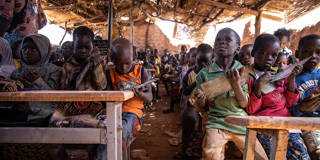More than 240 million children and adolescents worldwide have had their education disrupted due to war and violent conflict. The international community must mobilize resources to provide displaced children with safe learning environments, qualified teachers, and the means to resume their formal education.
OSLO – It was scorching hot when I arrived at a cramped classroom in the world’s largest refugee camp, in Cox’s Bazar, Bangladesh. But the children I came to meet, a graduating primary school class of Rohingya students, did not mind the heat. Instead, the smiling youngsters proudly told me that they had learned to read and write in Burmese and in English. And then they came over with hand-written letters, all of which contained variations of this one message: “You must help us get an education beyond primary school – we want to be teachers, doctors, and engineers.”

OSLO – It was scorching hot when I arrived at a cramped classroom in the world’s largest refugee camp, in Cox’s Bazar, Bangladesh. But the children I came to meet, a graduating primary school class of Rohingya students, did not mind the heat. Instead, the smiling youngsters proudly told me that they had learned to read and write in Burmese and in English. And then they came over with hand-written letters, all of which contained variations of this one message: “You must help us get an education beyond primary school – we want to be teachers, doctors, and engineers.”